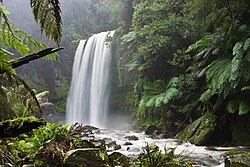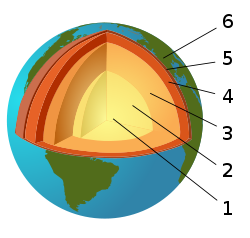Natural environment

The Natural environment means all living and non-living things occurring naturally. It does not include human activity. The universe is natural, but often the term "natural environment" only means nature on Earth.
Two aspects are usually included::
- Ecological units which are natural systems without much human interference. These include all vegetation, microorganisms, soil, rocks, atmosphere, and natural events.
- Universal natural resources and physical phenomena which lack clear-cut boundaries. These include climate, air, water, energy, radiation, electric charge, and magnetism.
There is also the built environment, which is not natural. There, man has changed landscapes and natural environment to make cities and agricultural land.
Etymology
Natural Environment Media
Land management has preserved the natural characteristics of Hopetoun Falls, Australia while allowing ample access for visitors.
An image of the Sahara Desert from satellite. It is the world's largest hot desert and third-largest desert after the polar deserts.
Earth's layered structure: (1) inner core; (2) outer core; (3) lower mantle; (4) upper mantle; (5) lithosphere; (6) crust
Coral reefs have significant marine biodiversity.
Lácar Lake, of glacial origin, in the Template:Province
A swamp area in Everglades National Park, Florida, US
Atmospheric gases scatter blue light more than other wavelengths, creating a blue halo when seen from space.
A view of Earth's troposphere from an airplane
Archived 2006-10-27 at the Wayback Machine — Development Foundation/Organization working on Environment, Education and Health








